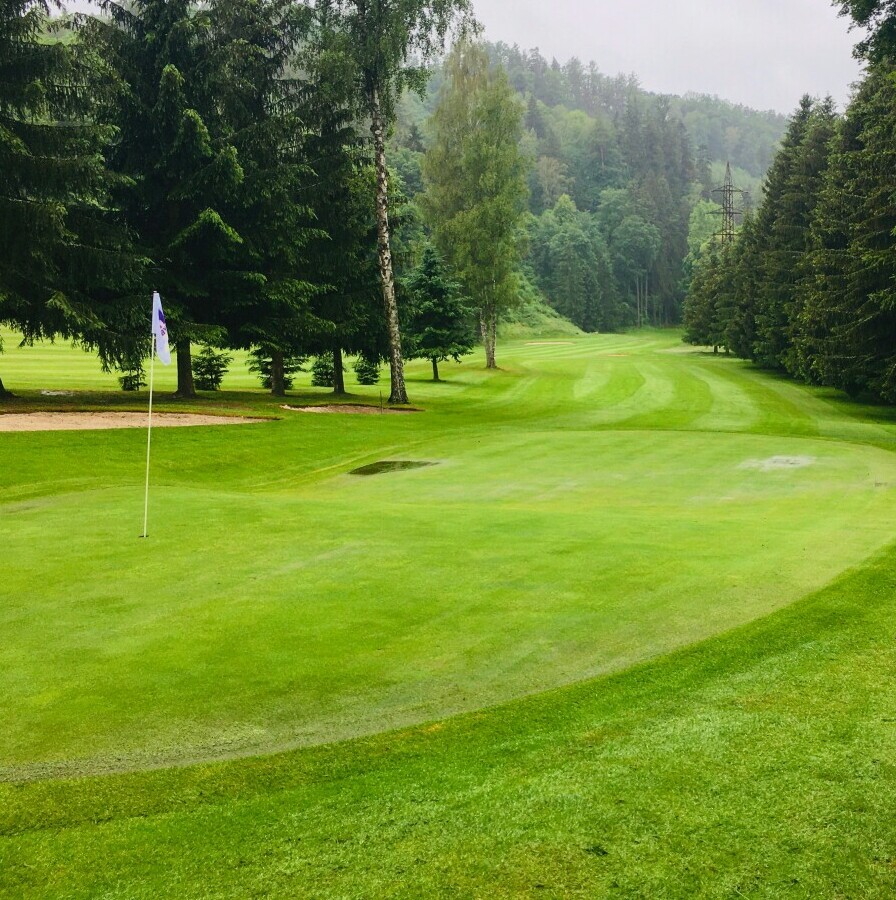How To Handle Tight Fairways And Small Greens


Fore! Quick note: a few links here are affiliate links. If you snag gear through them, I earn a small commission — no extra strokes added to your game.
Have you ever stood on a tee box and felt the pressure of narrow fairways staring you down? Tight fairways aren’t just a test of skill; they’re like a mental game of Twister. It’s all about precision and control, which can be a bit of a nightmare for some golfers. Luckily, the golf viking is here to help you guide your way through a narrow course and avoid playing the entire round from the woods.
These narrow passages often lead to golfers getting tangled up in their minds, overthinking every shot. The fear of sending that precious ball off into the wilderness demands not just technical skills, but a calm mind too. When you line up on a narrow fairway, it’s like stepping into a zone where every detail counts.
The course architects have a field day designing these tight spots, crafting challenges out of lush trees and tricky bunkers to catch any slip-up. Each hole becomes a puzzle, demanding focus and sometimes even a change in strategy. It can make you question your usual playstyle, nudging you to try something new.
And let’s be real, the adrenaline rush? Oh, it’s real. There’s something about tackling these tight fairways that gets your heart racing, like playing a high-stakes game where every swing can either break you or make you feel alive.
But remember, every challenge faced is a lesson learned. Take tight fairways as a wonderful opportunity to refine your game tactics and sharpen your skills. Embrace the challenge, learn from every swing, and slowly each narrow stretch becomes a bit wider in your mind’s eye. Let’s talk about small greens.
Mastering accuracy starts from the tee box. If you want to handle tight fairways with confidence, you’ll benefit from the insights in our guide to strategic tee box positioning in golf, which shows you how small adjustments can set up the perfect approach.

Navigating Small Greens: Precision is Key
Small greens are like trying to thread a needle during a windstorm. They’re incredibly demanding, pushing you to focus more on precision than power. These petite patches of green require the right balance between distance control and accuracy. Without this balance, you could find yourself in a bad spot.
Imagine you’re approaching the green, and what you see is more postage stamp than runway. It can be intimidating, especially when you’ve got your heart set on getting the ball right into the cup. Small greens often mean tighter targets, and they don’t give you much forgiveness for any errors. So make sure your not only accurate but playing the wind and weather conditions wisely.
Many golfers have shared tales of frustration mingled with determination when faced with such small landing areas. It’s not unusual to overshoot, undershoot, or even watch as a perfectly good approach shot bounces off into a bunker or hazard. But that’s part of the excitement—every shot is a new opportunity to test and improve your accuracy.
Environmental factors play a big role, too. Wind speed and direction, humidity, and even the lie of the course can make small greens even trickier. Pin placements can often make or break a scorecard. Being familiar with these elements becomes a necessity to gain even a slight edge.
Despite the challenges small greens impose, there’s a silver lining. They help hone essential skills. Each stroke serves as a learning curve to elevate your technical game and mental grit. By accepting the challenge, you become more versatile and adaptable as a golfer, turning tight spaces into another chance to truly shine.
When fairways get narrow, you can’t afford wasted strokes from the sand. Brush up on your bunker recovery skills with our breakdown of the best strategies for golf courses with lots of bunkers.

Mastery Over Tight Fairways: Effective Strategies
Handling tight fairways feels like solving a puzzle, but with the right approach, it’s totally doable. The trick lies in refining your drive for precision over power. You might want to ease off on the big swings and focus more on accuracy—it’s a game-changer.
One of the best hacks for these narrow constraints is adjusting your club selection. A trusty 3-wood or hybrid might offer more control compared to a driver, giving you better shot alignment. It’s like using the right tool for the job, making your life a whole lot easier on these slender paths.
Visualization is your best friend here. Picture the ball flight and landing before every swing. Seriously, it’s all about creating that mental roadmap to guide your physical actions. It not only boosts confidence but also adds a level of calm to your approach.
And don’t shy away from learning a thing or two from the pros. Many golfers swear by techniques they’ve picked up from watching tournaments or even taking lessons. Experts often emphasize the importance of staying focused and embracing a strategic mindset over sheer force.
Finally, practice makes perfect. Yeah, it might be a cliché, but it’s true. The more you play on tight fairways, the more familiar they become, helping you gauge just how much room you really have to work with. With every round, those treacherous tight lines start to feel like friendly boundaries instead of looming threats.
Sometimes a conservative layup is the smart choice on a tight hole. Our guide to knowing when to play aggressive vs. conservative in golf can help you make better strategic calls.

Conquering Small Courses: Sharper Play Techniques
Playing on small courses teaches you the art of precision, and having the right moves can change the game in your favor. First off, keeping your drives straight and on the fairway. Then tightening up your approach shots is essential. Focusing on distance control allows you to land the ball on the green with pinpoint accuracy, reducing mishits and more strokes.
Choosing the right club isn’t just about distance either; it’s about finesse. Your wedges are going to be your best friends on small greens. They give you the ability to chip with an exceptional level of control, so make sure those clubs fit your style and preferences. The more you play, the better idea of what club will work for you in each situation.
Reading the green is a skill you can’t overlook. Every small green has its unique flow and challenges. Understanding the breaks and slopes gives you a leg up in placing your ball within that ever-shrinking target area. Always be mindful of which way the green rolls, because you won’t have much space for the ball to roll before you’re off the green entirely.
Practicing these subtle touches can help a lot. Getting a feel for how greens react to your shots and adapting your technique accordingly can boost your confidence immensely. It’s all about embracing the challenge. Work on these skills will help you feel at ease no matter what course you’re playing on.
Speaking of confidence, trusting your gut when picking targets can help refine your shot choices. Building this trust results from regular practice, and as your skills sharpen, you’ll watch those tough small greens fall into the rearview mirror. Let’s wrap up what we’ve learned today so that you can get out and work on your accuracy.

Conclusion: Becoming a Versatile Golfer
Golf courses with tight fairways and small greens push you out of your comfort zone, helping you grow as a player. Each round offers lessons in precision, patience, and adaptability. Embracing these challenges builds not only skill but resilience.
Every swing and every shot on these demanding courses is an opportunity to refine your craft. It’s about learning to adapt and making tweaks to your technique to suit the course at hand. The more you encounter these tricky scenarios, the better you’ll become at navigating any course design.
Continual learning and practice are key. The game of golf is an ever-evolving journey. By staying committed and open to improving, you’re investing in a lifetime of enjoyable golfing experiences. Work on your weaknesses to become a well rounded golfer.
Remember, each challenge faced isn’t just a hurdle—it’s a chance to enhance your skill set. Approach every new game with an open mind, ready to tackle whatever lies ahead. This mindset won’t just make you a more versatile golfer; it’ll ensure you find joy in each game you play. I’ll see you out on the golf course, shooting the ball straight as an arrow.
Even the best strategy fails without a solid short game. Read our short game mastery guide for techniques that will help you recover and score, even when the landing areas are tiny.


